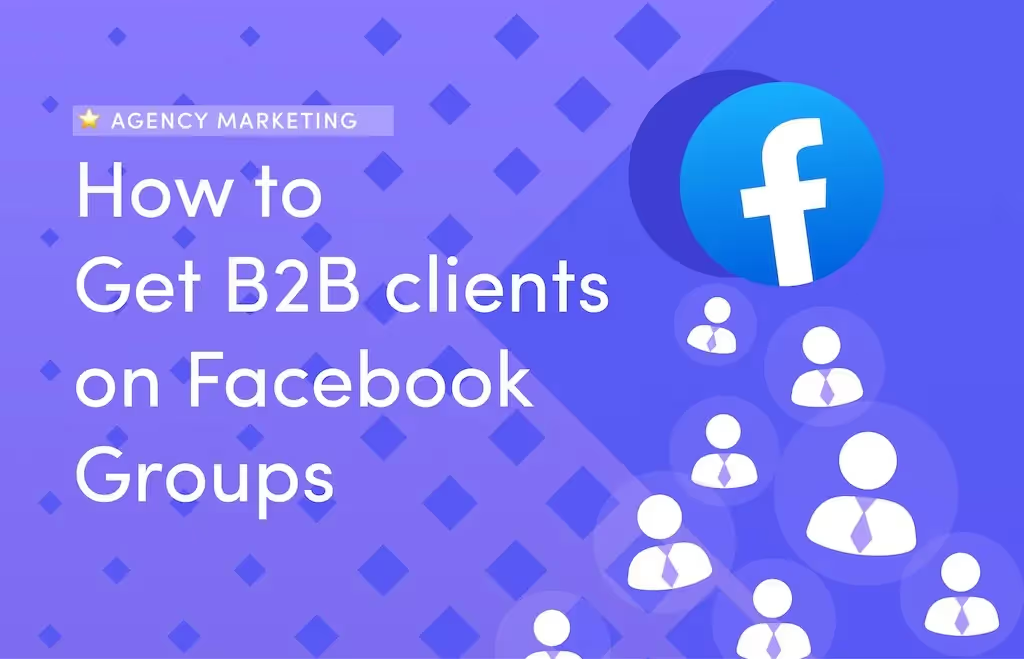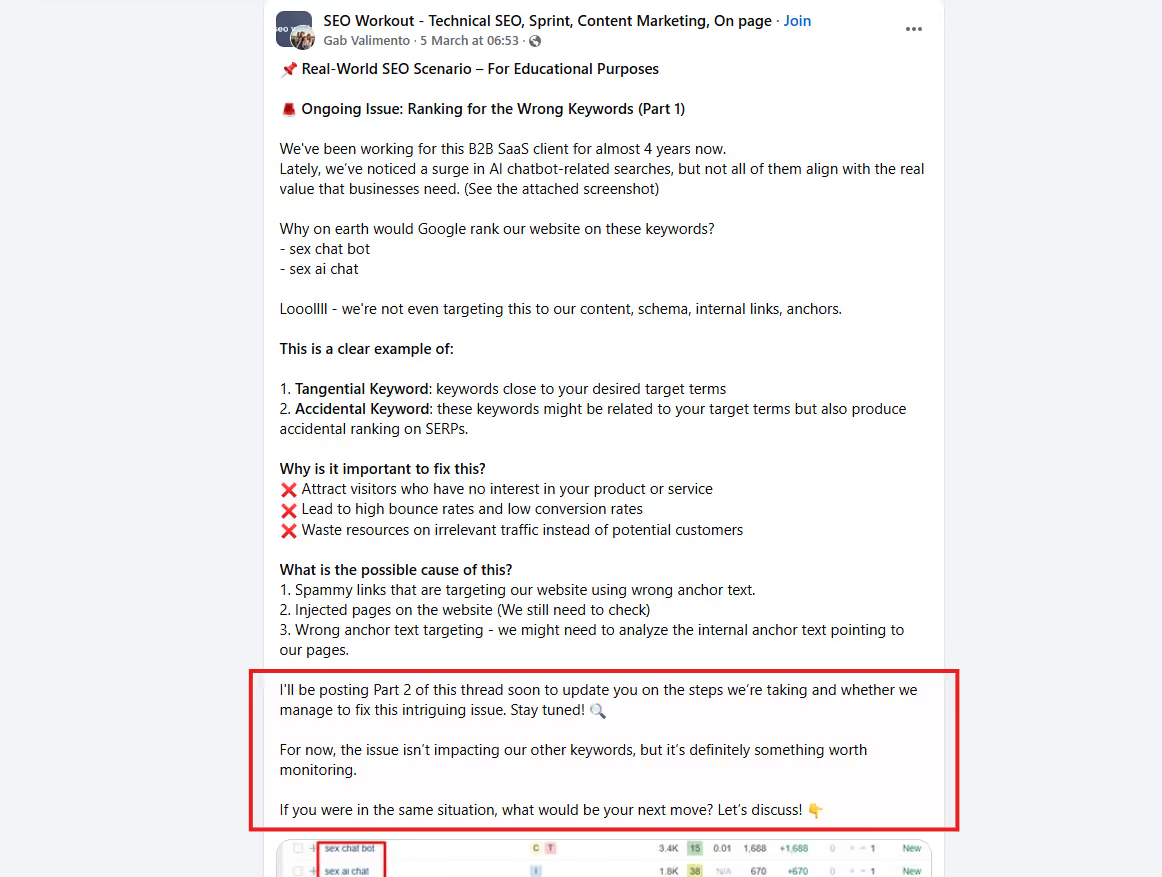How to Get Clients on Facebook: A Guide For Creative Agencies in 2025
Struggling to land leads? Here’s how to get clients on Facebook fast—no ads, just proven 2025 strategies for creative agencies.




Facebook is a gold mine to find clients, but it can be difficult without the right strategies.
And that's the reality:
You’ve set up your Facebook page and shared your work. You know the basics— post on your wall, try to build an audience and interact with other people's posts. But nothing is working.
And that's because there’s more to getting clients on Facebook than these half-hearted engagements and consistent posts.
In this article, I'll discuss how to get B2B clients on Facebook, and convert them to paying customers.
You may think Facebook is no longer important in 2025, but it is. There are 3.07 billion monthly active users (MAUs) on Facebook, that's 59.38% of the global social media population. This, and the following reasons are why you should consider Facebook:
You can find an audience for any industry you are in. Facebook has communities, groups of professionals who either need a service, are offering one, or want to drop a few tips here and there.
These groups are moderated well enough that you can actually connect with your ideal clients.
For example, say you're running a content writing service and some of your target audiences work in SaaS companies. Just searching for SaaS companies gives you a ton of results:

You can then decide which community to join and hopefully pitch a few of its members after they get to know you.
Facebook gives you the opportunity to learn about your ideal clients and the problems they face. For example, here's a query I searched on "SaaS Growth Hacks" (a group of SaaS business owners).
Let's say you want to learn more about the process of hiring freelance writers or getting content outsourced. Here's a search example:

Finally, when you’re just starting, you need patience. But with the right strategy, networking on Facebook doesn't take a very long time to yield results. However, something has changed:
The Facebook of 2025 is no longer the Facebook of 2015. This is because Facebook is smarter, there is more competition from other agencies, and you need better strategies to engage with the users there.
In this section, I'll discuss what changed and how you can still land clients from Facebook marketing strategies.
Facebook is a content distribution machine, but it doesn’t distribute content equally to everyone. The 2025 algorithm uses a personalized ranking system, also known as signals, that prioritizes engagement and meaningful interactions, to curate feeds for users.
Facebook uses these ranking signals to determine what content users will like and engage with. These signals are categorized into three:
In other words, content is ranked based on factors like who posted it, what type of content it was (videos or photos), and how people engaged with the post.
If you post an image of your latest design project and people just like it, that’s good—but it’s not great. If they comment, tag a friend, or share it, that’s when Facebook gives your post a boost.

Save for the fact that the post is articulated so well, he ended it with a sentence that asks for the reader's opinion, which means that people will definitely engage.
Here’s another example:

Here's an example of a poll from LocalIQ:

One of the biggest shifts on Facebook is that the platform is now prioritizing content with real community input.
A prime example is Facebook’s move from fact-checking to its new Community Notes feature. Users can now add context to posts, which means that your content is shaped by group contributions rather than a single authority.

This is great if you're building a community around your creative agency— which you should. If you can get people actively discussing your content, Facebook will naturally push it to more users. Ofcourse, you need to create genuine content that users will see as valuable.
An easy way to do this is to create Facebook groups around your niche, and encourage conversations in comments by responding to everyone who engages.
People use AI-generated posts in different ways, and if you don't mind swinging that way, you can also tap into it. You can brainstorm for ideas with an AI tool, improve the ideas with insights from specific forums, and instruct AI to write your posts.
The common problem with this is that most of these AI posts lack personality. They are robotic, generic, and in my opinion, forgettable.
Be human in your posts.
Share real case studies, mistakes you've made, and discoveries on a project you're working on. These tiny details can increase resonance and attract people to your agency and services.
Neil Patel does this exceptionally well:

Now, let's move on to how to get B2B clients on Facebook.
Facebook groups are a sure way to get clients on Facebook without spending your money on ads. It is almost like walking into a room where hundreds of your audience are, and “selling” your services to them.
Some of the ways to hack the Facebook group strategy include:
Here's my search for Content marketing groups:

From the screenshot above, you can see I got a list of content marketing groups that I could join. These groups have experts and business owners who could refer or need your services if they get to know your agency.
Facebook ads are more than boosting your posts, and hoping for the best. If you do this, you’ll burn through your budget without getting any tangible leads.
Facebook ads, when strategically used, can connect your agency with decision-makers at potential client companies. But to achieve that, you should do these:
Facebook and Instagram are visual platforms where ad creative quality directly impacts performance. Use tools like Canva to design professional-looking ads and Meta's built-in AI features to generate variations of your best-performing assets.
Use Facebook’s Advantage+ audiences (a targeting feature that uses AI to determine the audience for your ads) with a suggested base audience, like job titles or company sizes. Once you identify what's working, let the algorithm expand beyond your initial targeting.
Facebook is incredibly visual, and the algorithm will favour interesting visuals over boring ones. Use short-form video ads that show your client success stories, or lead generation forms with qualification questions built in.
Use conditional logic in lead forms to pre-qualify prospects before they even submit their information. For example, ask about their project timeline, budget range, or specific service needs to immediately route high-potential clients to your sales team.
ManyRequests has a ready-made, customizable intake form to ask clients all the necessary questions. These forms have a series of customizable questions that you can ask clients during the onboarding process. You can also automate this process for clients with similar needs.
.avif)
With ManyRequests, you can use the customer data you’ve collected to create a project immediately—there's no need for long emails. All you need to do is share a link to the form on your Facebook page or website, and your customers will see it under your brand.
Running ads and engaging in groups is great. But what happens after someone shows interest? If you don’t have a system in place to capture and nurture leads, you’ll lose your clients.
You can set up Messenger auto-replies, so that when someone messages you even when you're not online, they get an immediate response. Something along the lines of "Hey, thanks for reaching out! Tell me a little about your project, and let’s see how we can help.”.
You should also have an organized CRM tool to track leads and onboard new customers. ManyRequests provides CRM features specifically for creative agencies to organize all client details, including their files, notes, and invoices.

Once you have quality leads, either organically or through ads, ManyRequests provides a central platform to organize these potential clients. You can:

Having a good CRM structure in place helps you give clients good experience, which would encourage them to keep working with you.
If you're running an ad, you can also use Facebook lead ad forms to pre-qualify clients. You can collect their names, emails, and even project details with the built-in lead forms. This will help you convert them into customers.
HubSpot explains it perfectly:

Another way is to fully convert clients with email sequence replies.
That is, once they’ve dropped their email, send emails that can convince them to purchase your services. There are several email automation software that can help you schedule and send these emails. If you're using ManyRequests, you can customize your emails to show your agency's brand.
Your agency’s first impression matters. When someone visits your page, they should instantly understand who you are, what you do, and why they should trust you.
To optimize your profile:

Here's an example from Column Five:

With ManyRequests, you can create pre-booked service catalogs that potential clients can browse through, select a service, and pay for that service.

You can also create a link to this catalog and add it to your bio, so people can easily access the services you offer.
Your audience cares more about what you can do for them than how long you've been in business. Show them how you can solve their pain points.
Visual content tells potential clients that you know what they need, how you’ve helped other clients with similar problems, and how you solved their problems.
Some of the ways you can show is through:
Stories appear at the top of Facebook feeds, so they’re the first thing people see. Reels also get boosted by Facebook’s algorithm to help you reach new audiences organically. It could be as mundane as the marathon your team ran for charity or your opinion on a new industry trend.
Facebook hates ghost town pages.
If people comment on your posts and you don’t respond, your content will stop showing up in feeds. The algorithm rewards engagement, so the more conversations you create, the more visibility you get.
Finding clients on Facebook can be fast or take some time, but you should be seeing results. If you're not, you could be making these mistakes:
Now that you know how to find B2B clients on Facebook, it's important to have a clear strategy to manage these clients and their projects.
Once leads start rolling in, your agency will need an all-in-one system like ManyRequests to handle project management, client communication, team collaboration, invoicing, payment, and creative work processes. Sign up for a 14-day free trial to see how it works.